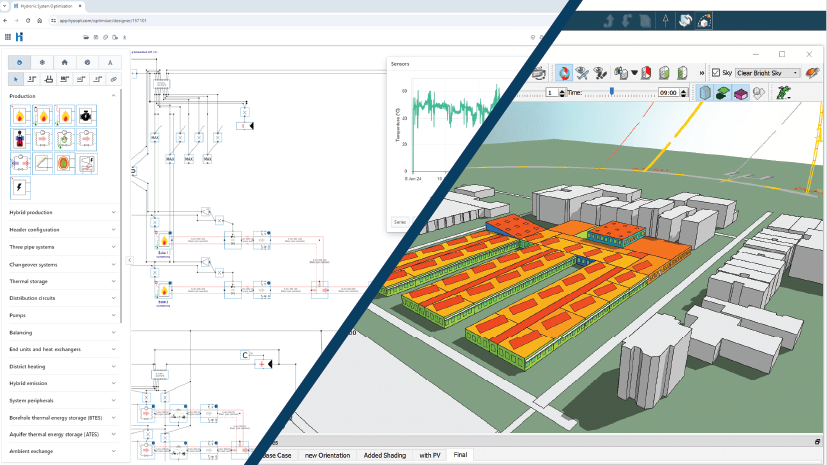How Digital Twins Will Reshape HVAC by 2030
By 2030, digital twins will be the standard in HVAC system management. Discover how they help optimise performance, cut emissions, and reduce lifecycle costs—especially across large building portfolios.
By 2030, digital twins will be the standard in HVAC system management. Discover how they help optimise performance, cut emissions, and reduce lifecycle costs—especially across large building portfolios.
While 3D design tools have become standard in HVAC, the next frontier is already taking shape: digital twins. These living models don’t just represent what a system should look like—they reflect how it actually performs in real time. And by 2030, digital twins will be essential for buildings and campuses that want to reduce emissions and cut operating costs.
By continuously comparing measured data with simulation outputs, digital twins allow facility teams to spot deviations, diagnose issues faster, and fine-tune system performance over time. It’s a smarter, more proactive way of working—backed by data, not guesswork.
For organisations managing multiple buildings, digital twins offer a single source of truth. Whether you're responsible for university campuses, hospitals, government estates, or commercial portfolios, the value is clear:
All of this leads to better decision-making and better buildings. And when budgets are tight, digital twins help focus resources where they matter most.
Curious what that looks like? See how to manage HVAC performance across your portfolio ›
Data alone doesn’t fix problems. But when digital twins are used to contextualise performance metrics—matching them to system logic and physics—they unlock powerful insights:
With this level of clarity, technical teams can shift from reactive firefighting to continuous optimisation. And even as buildings change, refurbish, or expand, the model keeps pace—reflecting reality as it evolves.
Digital twins are no longer just a research concept. At Hysopt, we see clients applying them today to:
In short, they’re bridging the gap between what’s been designed and what’s actually delivered.
Ready to take your HVAC performance management into the future? Learn how to manage HVAC performance across your portfolio ›
Ontdek de 6 belangrijkste HVAC-trends voor 2026 in dit e-boek, boordevol data-gedreven inzichten en praktische acties om je te helpen voorop te blijven in een veranderende markt.
Download vandaag nog je exemplaar en ontdek wat geen enkele HVAC-ingenieur zich in 2026 kan veroorloven te missen.


.jpg)
